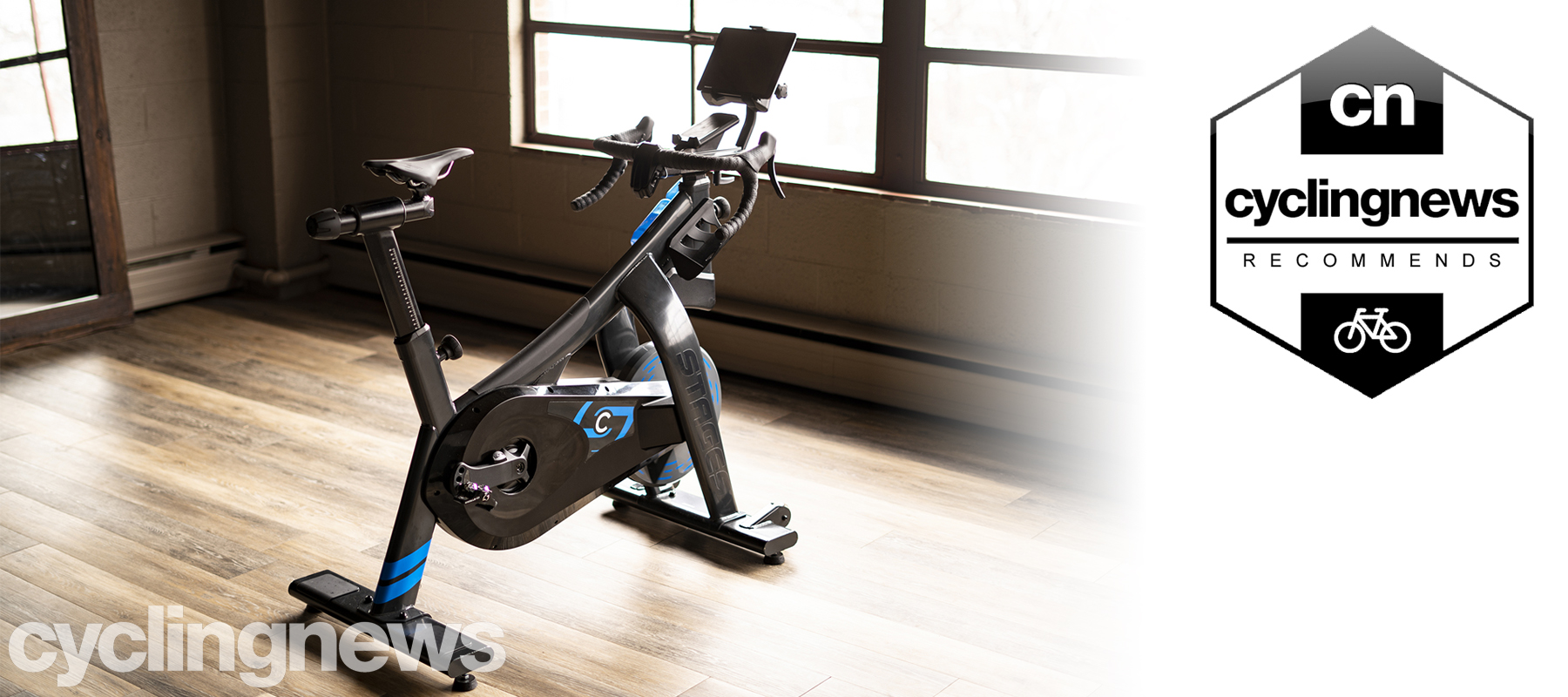Cyclingnews Verdict
Ideal for those who race or train using indoor cycling apps. Practical setup and low noise make it an ideal training tool for apartments or terraced housing
Pros
- +
Quiet
- +
Solid and durable
- +
Fast, smooth, gear changes
- +
Adjustable gearing
Cons
- -
ERG mode gives a lot of leeway
- -
Each time the app connects the selected gear is reset
You can trust Cyclingnews
If you are a long time Zwift user you might have noticed a change this year. In the past, a race might have attracted 30 people. This morning I joined a group ride, at 9:30am during the workweek, and there were 250 people. This wasn't an event that Zwift spent weeks marketing; it was one of many community rides during the week.
The market for indoor riding has taken a turn and is no longer a niche for serious cyclists but mainstream exercise aficionados, too. With the participation comes buying power, innovation, and competition. It’s in this space that the best exercise bikes have found room to flourish.
If you are looking for a serious upgrade to your indoor cycling then an indoor-specific bike is a solid option. Smart bikes are a focused solution for the most hardcore of indoor riders. I took a look at what Stages has put forward and the ways in which it makes indoor riding better.
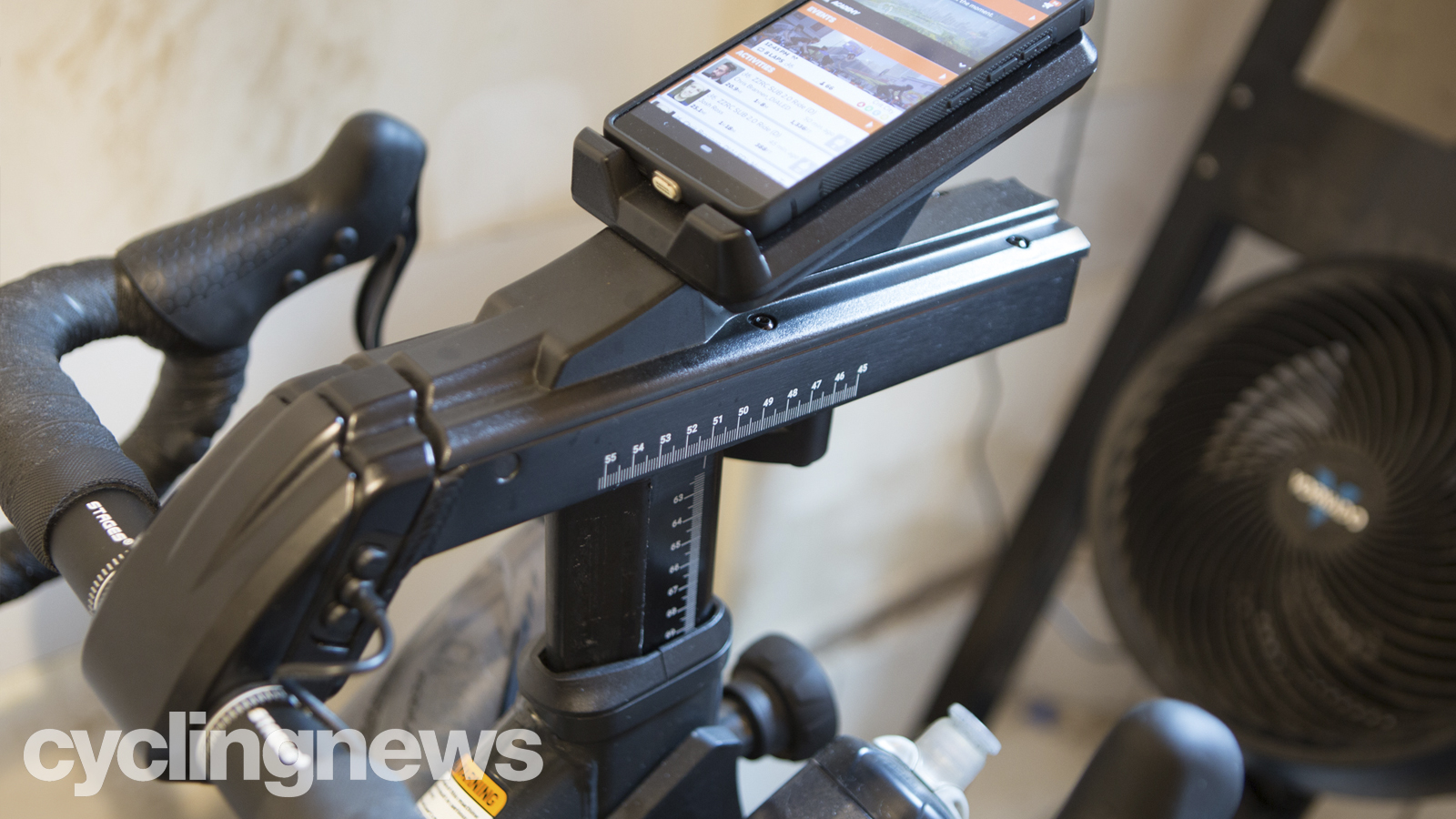
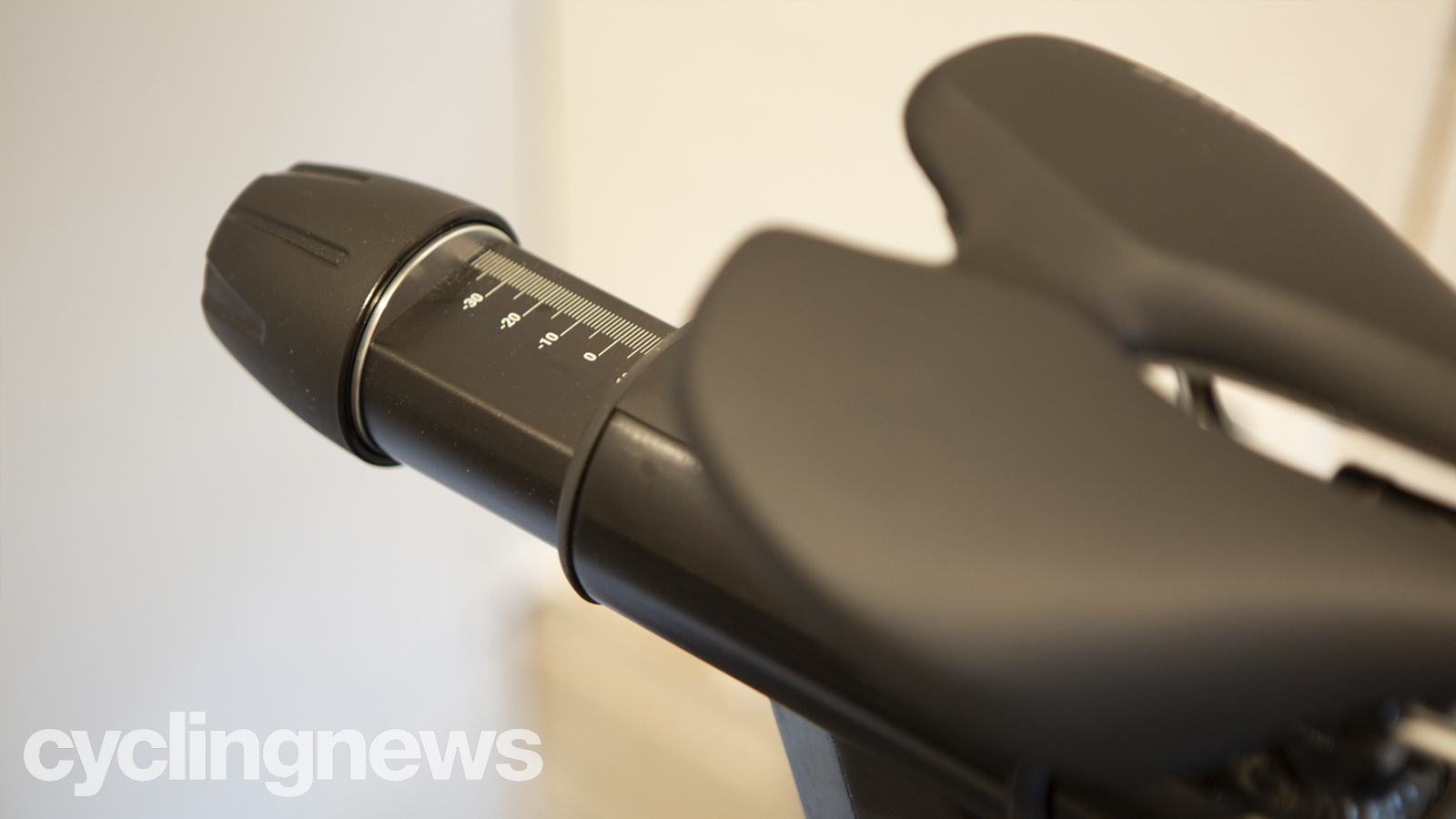
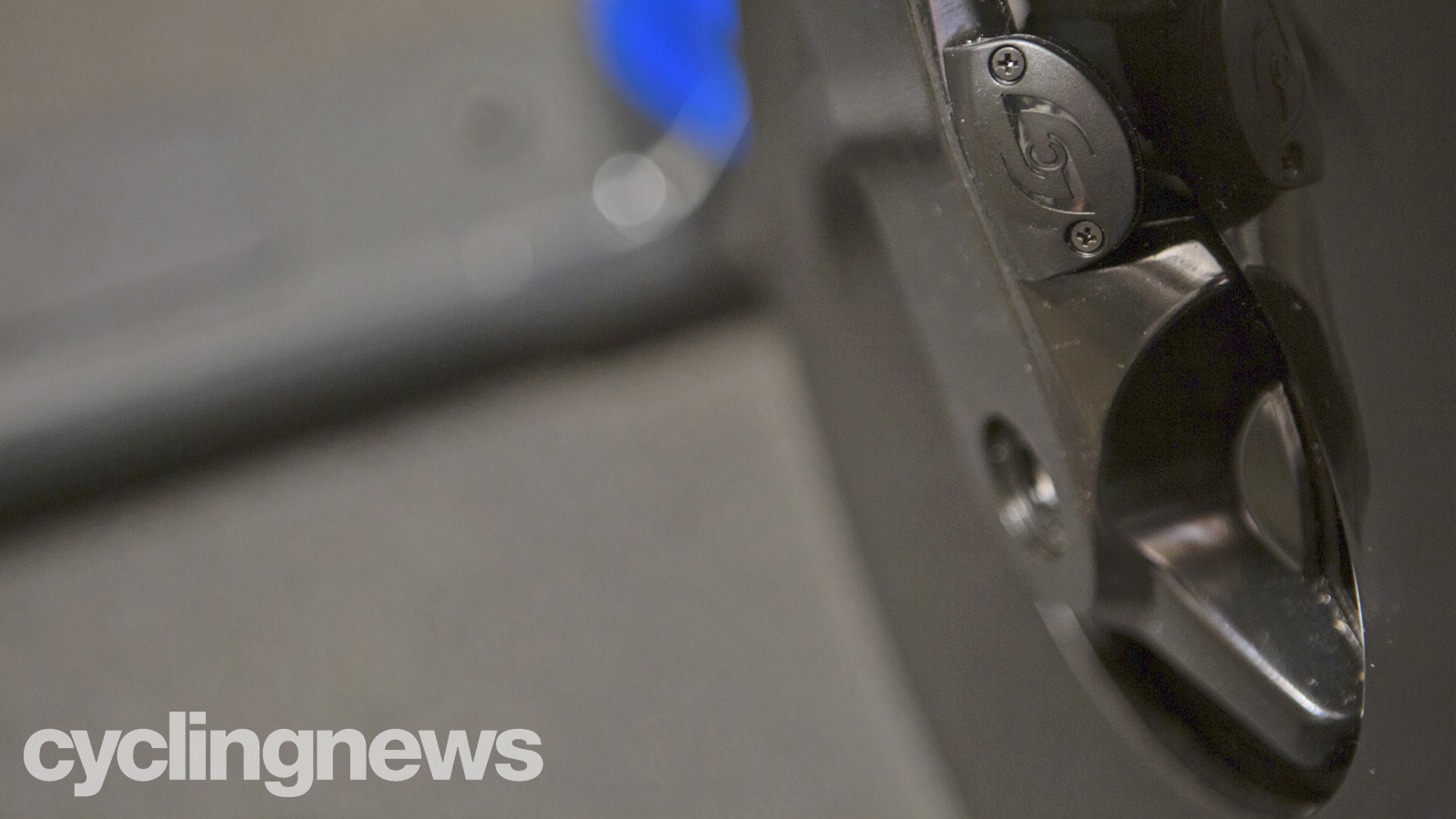
Design and aesthetics
Stages has a long history, and does significant business supplying exercise bikes to gyms. It's through this glass that the design of the SB20 makes the most sense. The handlebars are what you'd expect to find on a road bike, and are swappable if you'd like, but even the way they mount is unlike an outdoor bike. In fact, there's nothing traditional about it.
Starting at the front the first thing you'll see is either an optional tablet holder or a phone holder. I left the tablet holder off as I use a laptop when riding inside. The phone holder is an integrated piece so it's there even if you think you might not use it - but you will, and it's a beautiful thing to have your phone so easily accessible while riding.
Just below the phone platform is the handlebar mount. This is one of four places where it's easy to adjust fit. There's a cam lever to adjust the bars forward and backwards as well as a large rubberised dial to move the bars up and down. There’s a swappable mount that adjusts the starting place for the handlebar mount. Below the adjustments is where a couple of bottle holders live. Unlike a road bike it's a cradle system so nothing moves around.
The most obvious structural component is a big, thick, backbone with a gentle inverted sweep. At the front of the SB20, it morphs into the bottle holder and bar mounts and, at the rear, it culminates into what resembles a seat tube. At the rear is an intersection where the crank and back of the drivetrain meets up with the seat tube and rear support. There's nothing on a traditional bike to compare the rear support to but it's another big steel piece that connects the seat tube to the feet at the rear. Move up the seat tube and at the top you'll find a saddle that would be happy on any road bike. There are two big, easy-to-grab adjusters for saddle height and fore/aft saddle location as you move up towards the saddle.
The heart of the Stages SB20 bike is a Gates Carbon Belt Drive. It's one of the defining features but it's not visible. In place of the drivetrain is the silhouette of the drivetrain completely encased in protective plastic. This protection, along with the thick protective layer on all the metal pieces is likely learned from gym experience. Human sweat is corrosive and all the protection should keep everything working smoothly.
Keep moving down to the base of the bike and there is a pair of crossmembers. One at the front and one at the rear both sporting adjustable feet. The Stages SB20 is stable in the same way a marble table feels stable. Lots of weight underpinned by solid footing means it doesn't move at all. To make it possible to change its location there are a couple of inline skate wheels on the front cross member. Tilt the whole unit forward and it rolls with ease until it's set back down.
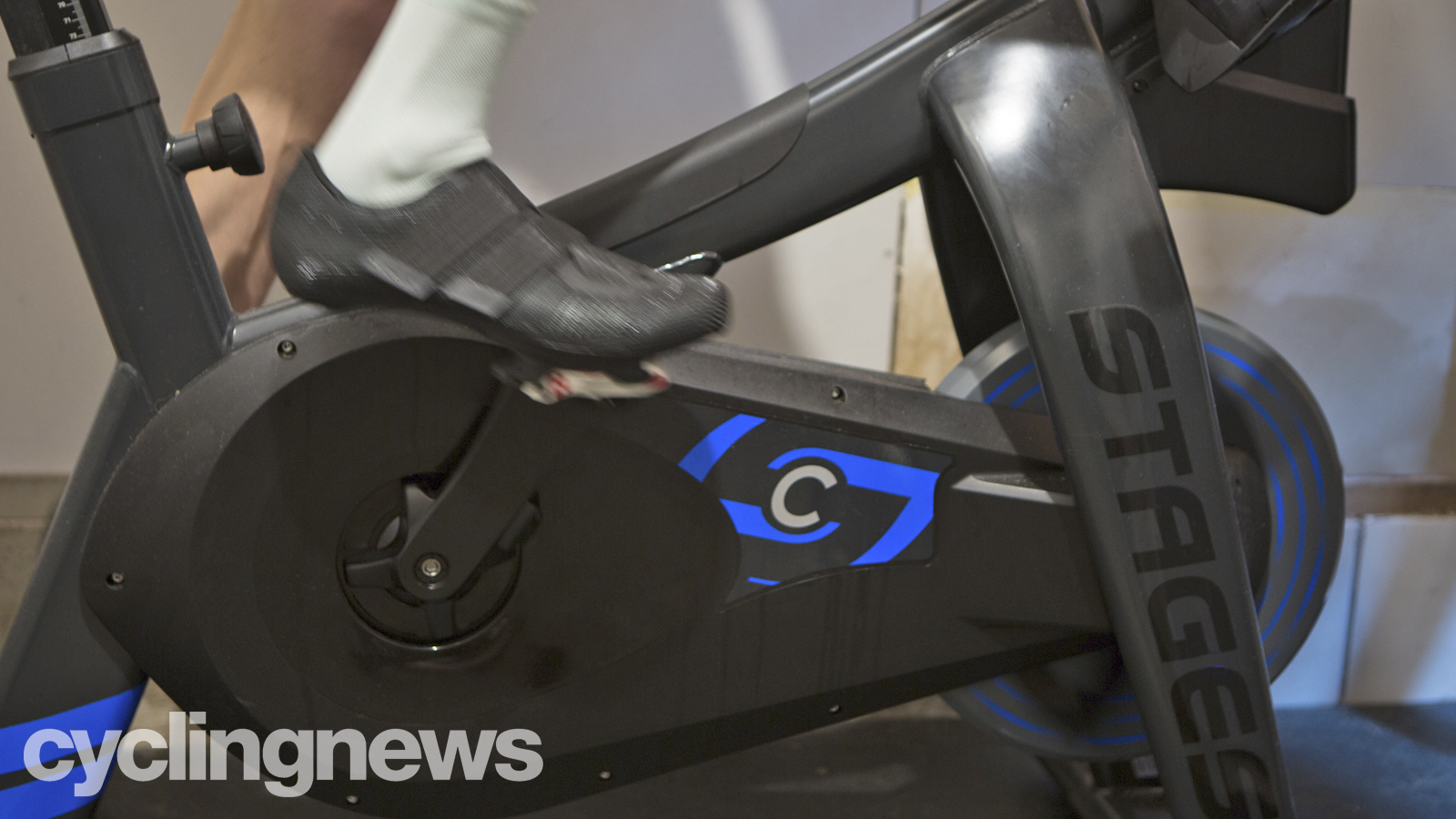
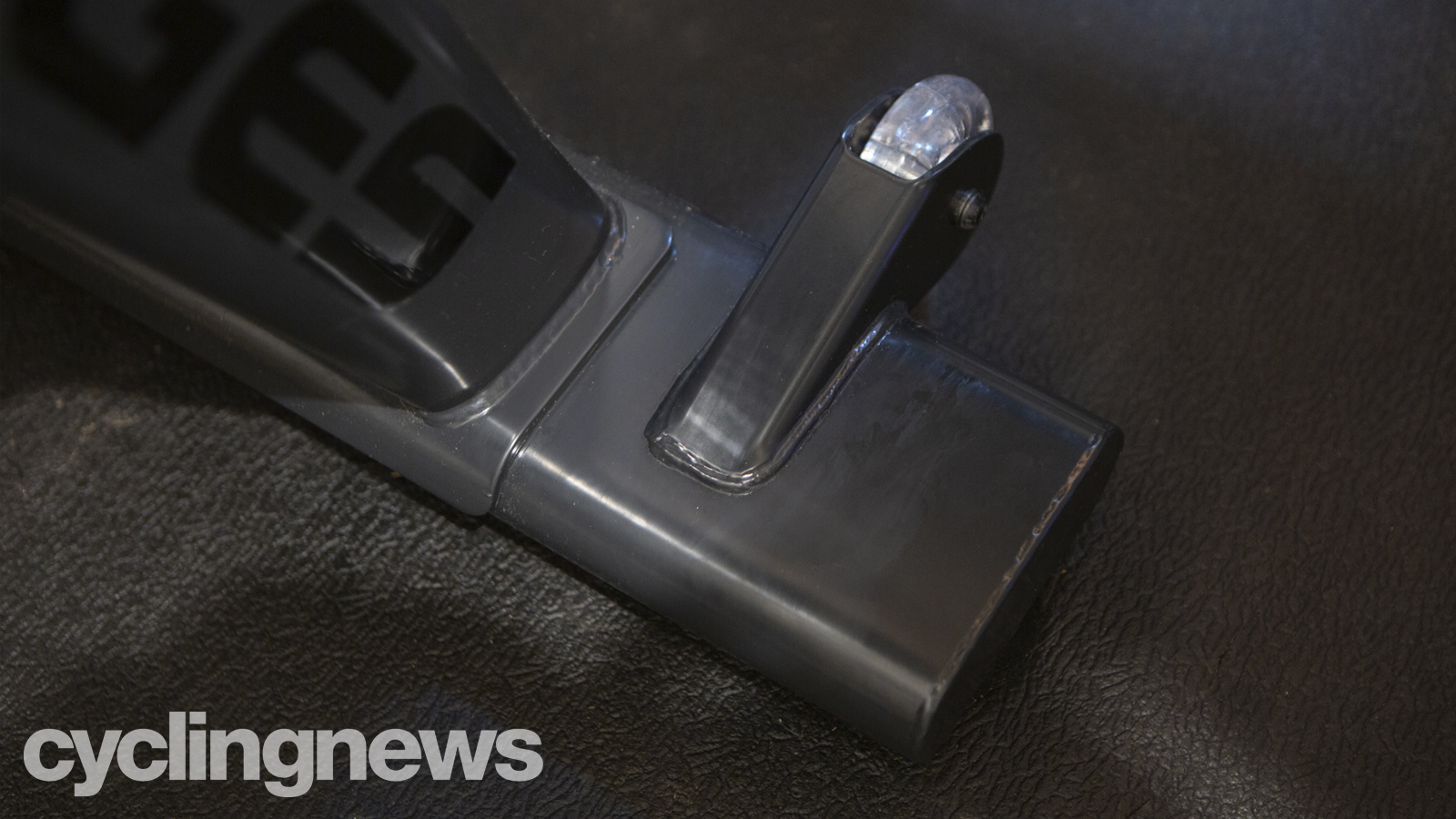
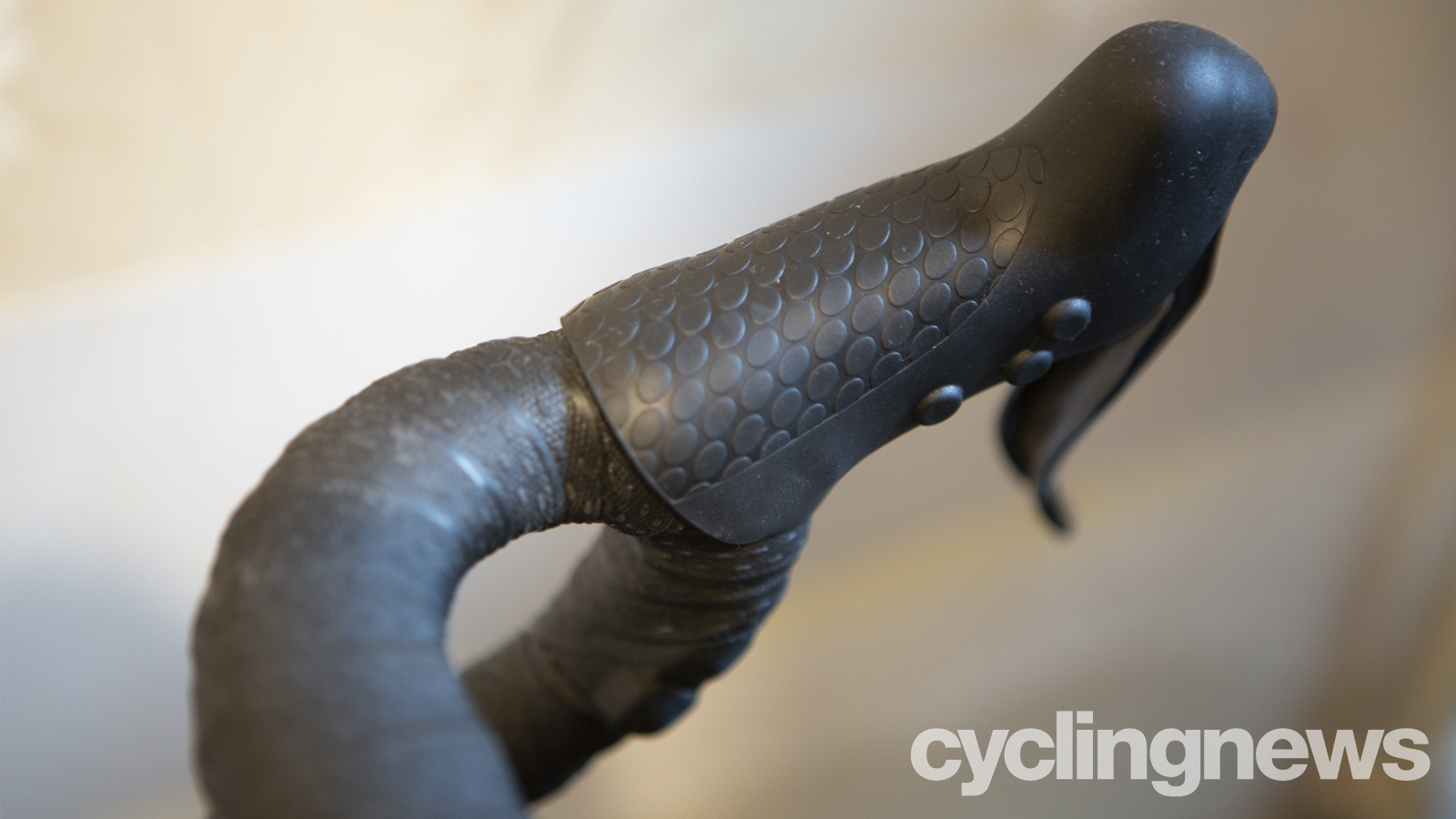
Setting up the Stages bike
The Stages SB20 comes in a massive box and weighs at least 150lbs (62.5kg). There's no way I can say setup was an easy experience. My indoor riding happens in a very small laundry room with just enough space for a bike. Assembled weight comes to 138lbs including a heavy-duty steel structure and a 50lb flywheel. There was no chance I was getting the assembled unit down the stairs into the laundry room.
Once the box was sitting on the ground assembly took about 3 hours. The SB20 itself is made up of a few pieces. The main part of the structure is a single solid piece. The backbone, the forks, the rear support, and the drivetrain is all one unit. The pieces that require assembly are the handlebars, saddle and saddle mount, and both horizontal braces with feet. None of it's all that complicated but everything is heavy and it's difficult to extract it from the packaging in a tight space.
The included instructions are clear and thorough. Things took more time than I would have guessed but it was just a matter of going step-by-step and dealing with a big item in a small space. Once I managed to get it all together, I faced the next challenge of fitting it to me.
I know my fit well but I was still daunted by fitting the Stages SB20 to me. Every touchpoint on the bike is completely customisable. With no fixed points, I had to start at the crank and drop a plumb line to figure out where the saddle should be. I actually tried to eyeball it first but with both the bars and saddle able to move I later had to be more precise. The last piece of setup was the electronics. Plug the SB20 into the wall and download the Stages app to your phone then connect to the SB20. I ran into some issues here and after a bunch of failed firmware updates, I called support and they sorted me out and got everything working seamlessly including pairing the bike to Zwift.
Ride experience
The SB20 is an amazing machine to ride. There are some practical considerations that an indoor-specific bike should consider and the SB20 does it all. Riding indoors means one thing - sweat and a lot of it which can cause corrosion. Stages has considered this and everything is as protected as possible.
The next thing I noticed was the gearing. There's no real cassette and gearing can be whatever you want. There are five shift buttons and they are all customisable. Two are down low for easy reach on the drops and the other three are up high in a configuration that reminds me of a Campagnolo setup. Through the Stages app it's possible to customise each button. I have it set for using the front two buttons on the hoods. Up goes up the virtual cassette and down goes down. The buttons on the drops do the same but I don't use them. It's not all that comfortable to be on the drops and I have no need for extra leverage or aerodynamics inside. It is pretty comfortable to put my forearms on the flats and grab the back of the phone holder for a TT position.
What marks the riding experience is more the stability, smoothness, and the shifting experience. The weight of the system, including the flywheel, makes setup hard but in use it's amazing - the whole unit is silent. There's no drivetrain noise and it doesn't move at all. There's no vibration, or rocking, of any kind. If you live in an apartment the SB20 is ideal.
Along with that solid feeling the shifting is unbelievable. If you want to shift in a full sprint up a hill go for it - it's all 'virtual' anyway. Shifting under full torque won't hurt anything and the bars aren't moving around or vibrating. It really is an amazing experience.
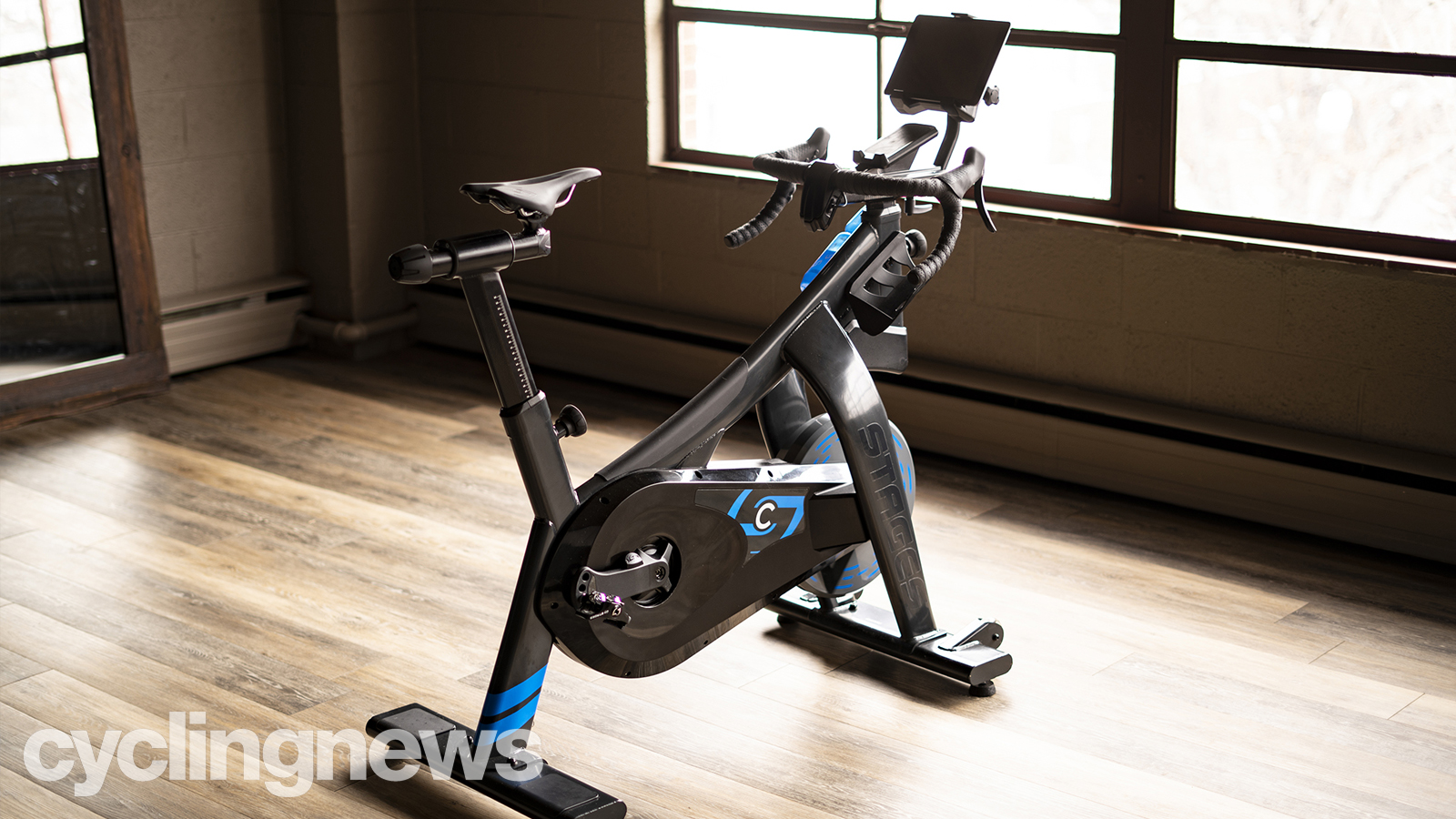
Verdict
Pricing starts at $2,899.99 and that's fairly steep if I'm honest - especially for a bike that can't ever travel a single mile outside. You could buy yourself a decent outdoor bike and a nice direct-drive smart turbo trainer and probably still have some money to spare and, for some people, it's this rhetoric that doesn't make it sound like a smart decision.
Something like the Stage SB20 bike starts to make sense if you live in a country with cold, wet, dark winters where riding outside can be unpleasant or even dangerous. It also is resistant to sweat and doesn't have as many moving parts as a traditional bicycle so servicing costs are minimal.
In terms of training and racing, it works superbly with Zwift and other indoor cycling apps, too. It's also a good choice if you live in an apartment where noise is frowned upon. The Stages SB20 is quiet enough to ride in a bedroom and, without any vibrations, it won't bother the neighbours.
Tech specs: Stages SB20 Smart Bike
- Unit weight: 138lbs / 62.5kg
- Flywheel weight: 50bs / 22.6kg
- Connectivity: ANT+, Bluetooth LE
- Accuracy: +/- 1.5%
- Max power: 2200w
- Weight limit: 300lbs / 136kg
Josh hails from the Pacific Northwest of the United States but would prefer riding through the desert than the rain. He will happily talk for hours about the minutiae of cycling tech but also has an understanding that most people just want things to work. He is a road cyclist at heart and doesn't care much if those roads are paved, dirt, or digital. Although he rarely races, if you ask him to ride from sunrise to sunset the answer will be yes. Height: 5'9" Weight: 140 lb. Rides: Salsa Warbird, Cannondale CAAD9, Enve Melee, Look 795 Blade RS, Priority Continuum Onyx
